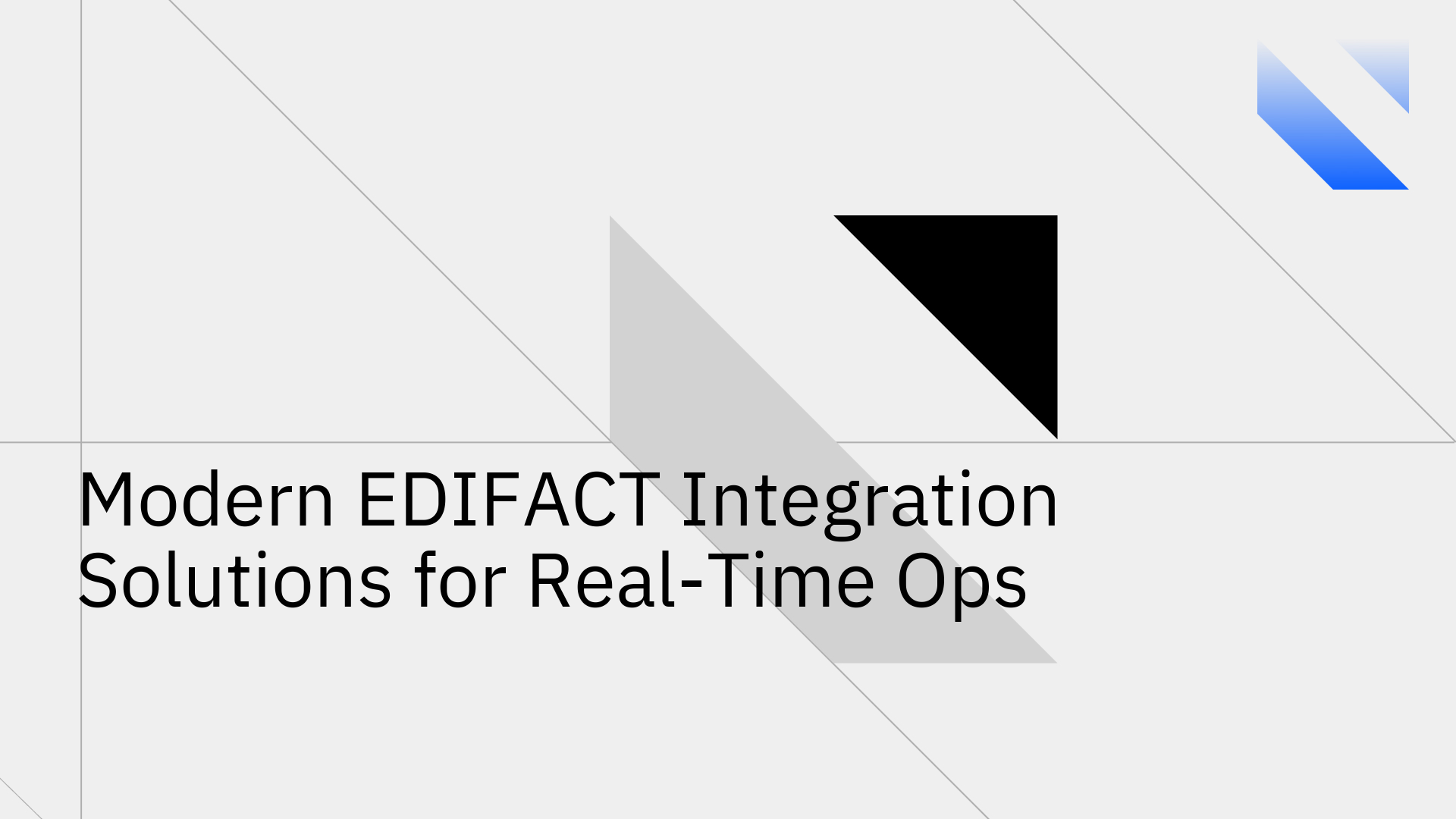
Electronic Data Interchange for Administration, Commerce, and Transport (EDIFACT) is a foundational standard for B2B communication, orchestrating critical data exchanges in industries like logistics, manufacturing, and e-commerce.
However, traditional integration methods—characterized by batch processing and complex setups, are fundamentally misaligned with the modern need for real-time operational data. As of October 2025, the challenge for enterprises is to evolve from legacy EDI to modern EDI EDIFACT integration solutions that leverage real-time, API-driven architectures.
While EDIFACT provides a robust messaging standard, legacy integration methods create significant business bottlenecks. These outdated approaches are no longer sufficient for enterprises that depend on instantaneous data consistency to compete.
Traditional EDI systems rely on batch processing, where data is collected and sent at scheduled intervals.
This inherent latency introduces a cascade of operational inefficiencies, including delayed order processing, inaccurate inventory levels, and late shipping notifications. Without modern integration, businesses risk delays, miscommunications, and compliance issues that directly impact revenue. Modernizing your EDI is essential to eliminate these risks.
Legacy EDI infrastructures are notoriously complex and carry a high total cost of ownership. They demand specialized EDI experts, custom scripting, and expensive Value-Added Networks (VANs). Onboarding a new trading partner can be a months-long project. In contrast, modern API connectors offer a more agile and cost-effective solution by reducing deployment times and abstracting complexity [1].
The batch-oriented nature of traditional EDI prevents businesses from having a real-time view of their supply chain. This information lag hampers agile decision-making, as a critical alert can be buried in a batch file scheduled to run hours later. This lack of visibility undermines an organization's ability to respond quickly to disruptions or opportunities.
Application Programming Interfaces (APIs) are the key technology enabling the modernization of EDI. By allowing systems to communicate directly and in real time, APIs bypass the rigidity of older methods. This approach, often termed "EDI-as-API," simplifies B2B data exchange for modern developers [2].
Modern integration platforms act as a translator, converting traditional EDIFACT messages into formats like JSON or XML that are easily consumable by modern ERPs, CRMs, and cloud applications [3]. This allows developers to interact with familiar API endpoints instead of archaic file formats.
APIs facilitate a shift from batch schedules to event-driven workflows. For example, an order placed on an e-commerce site can instantly trigger an EDIFACT purchase order to a supplier's ERP. This is the power of real-time sync between systems, ensuring operational data remains consistent across all platforms.
Stacksync is a modern platform designed to overcome the challenges of traditional EDI. As a no-code, real-time solution, Stacksync connects EDIFACT workflows directly into your business systems, eliminating latency and complexity.
Stacksync provides bidirectional synchronization in milliseconds, ensuring data is always up-to-date across all connected systems. This enables sophisticated workflows, such as an updated invoice triggering a process in your CRM, while robust error handling prevents silent failures. As a comprehensive data sync and workflow automation platform, Stacksync serves as the operational backbone for your data.
With a library of over 200 pre-built connectors, Stacksync's no-code setup allows businesses to configure and launch EDI integrations in minutes. This eliminates the need for complex custom integrations and reduces reliance on specialized IT resources.
Stacksync supports all major EDI standards and protocols, guaranteeing compliance with any trading partner's requirements. Its cloud-native architecture is built to scale and support high-volume, global deployments, positioning it as a modern, scalable alternative to older iPaaS solutions like Dell Boomi.
A key feature of modern EDI platforms is connecting to numerous applications [4]. Stacksync excels at integrating EDI with a wide range of systems, including ERPs, OMS, WMS, databases, and other SaaS applications, unifying both legacy and modern technology stacks.
For businesses transitioning to a modern EDI EDIFACT integration solution, the process involves four key phases. For a more detailed walkthrough, external resources offer a comprehensive guide to implementation [5].
Traditional EDIFACT integration is no longer sufficient for today's fast-paced business environment. Its reliance on batch processing creates operational liabilities that hinder competitiveness. Modern, API-driven solutions like Stacksync provide the real-time speed, flexibility, and scalability needed to stay ahead. By moving beyond batch delays and embracing a modern integration strategy, you can unlock new levels of efficiency and future-proof your business.
To learn more about how Stacksync can modernize your B2B data exchange, explore our EDI integration solutions and start building more resilient, real-time operations today.